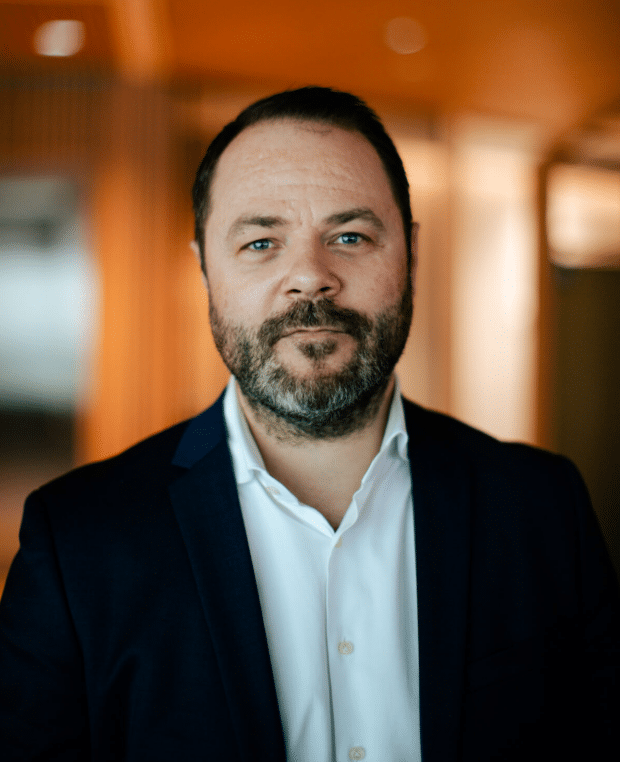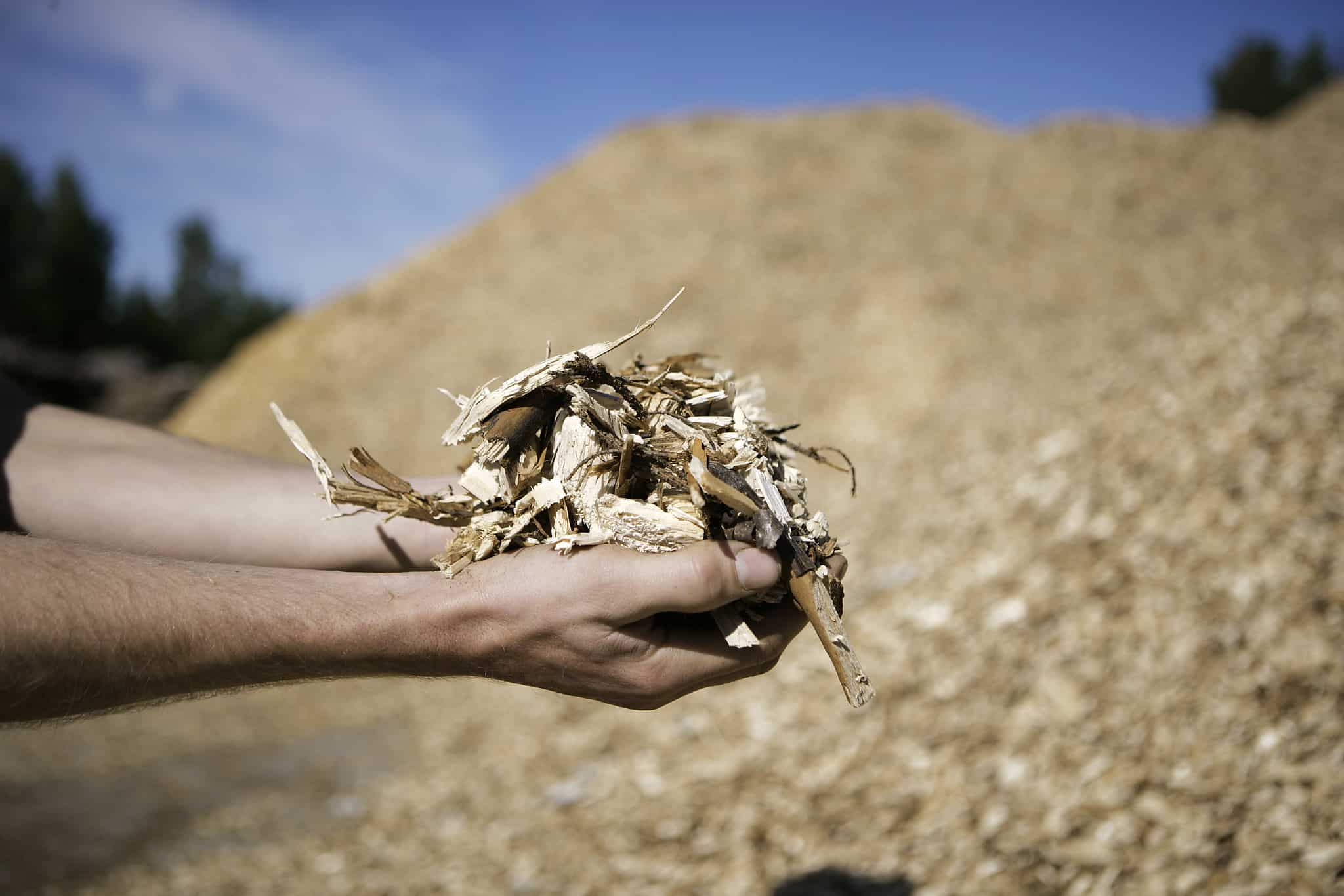
Hafslund Oslo Celsio
A word from the Managing Director
2022 was a very eventful year for Hafslund Oslo Celsio, or Celsio, as we like to call ourselves. We have new owners and a new name, we started a pioneering project to construct a facility for full-scale carbon capture and storage at our Klemetsrud waste incineration plant, and we had zero incidents of injuries to employees.
Celsio is Norway’s largest supplier of district heating and plays a key role in Oslo’s circular energy system. We use excess heat from waste incineration, Oslo’s sewage and data centres to produce renewable district heating for Oslo’s residents and businesses. We currently provide 20 per cent of the capital’s heating requirements, and have a strong ambition to increase this share in the years to come. We also own and operate Norway’s largest waste incineration plant, and provide safe and environmentally friendly final treatment of residual waste that cannot or should not be recycled. District cooling is an important focus area for us. We initially plan to supply district cooling to businesses in three selected areas in Oslo, Ulven/Økern, and Indre by (inner city), including Filipstad and Skøyen.
Once completed, our carbon capture project at Klemetsrud will significantly reduce Oslo’s CO2 emissions. This will enable us to take an active role in the green shift and the global fight against climate change.
We have a great deal to be proud of at Celsio, but we will not rest on our laurels. We are well-equipped for growth and have what it takes to maintain our position as Norway’s leading circular energy company.
Knut Inderhaug

Description of the business area
Celsio supplies the residents of Oslo with district heating and cooling. Among other things, district heating is produced by utilising excess heat from the city’s waste incineration, data centres and sewage. Celsio owns and operates two waste incineration plants in Oslo and ensures sustainable handling of waste that cannot be recycled. In the summer of 2022, construction commenced on the world’s first full-scale carbon capture and storage facility at the Klemetsrud waste incineration plant.
In addition to being an energy supplier, Celsio is an infrastructure and urban development company that contributes to the development of a greener and smarter Oslo. Celsio also owns 100 per cent of the fibre company Hafslund Fiber, which supplies dark fibre to the business sector. At the end of 2022, Celsio had approximately 200 employees working at the two waste incineration plants at Klemetsrud and Haraldrud and at the headquarters in Skøyen.
Waste incineration
Celsio owns and operates two waste incineration plants, one of which is located at Klemetsrud and the other at Haraldrud in Oslo. From these plants, the company provides safe and environmentally friendly final treatment of residual waste that cannot or should not be recycled. Celsio incinerated a total of 356,000 tonnes of residual waste in 2022. The waste heat from waste incineration is fed into the district heating network.
District heating activities and waste incineration are important and necessary parts of the circular economy. Incineration of this type of waste has a much lower impact on the environment than storing waste in landfill, which is still a common practice in many European countries. The CO₂ emissions emitted by one tonne of waste over the lifetime of the landfill are about 50 per cent higher than the CO₂ emissions emitted from the incineration of one tonne of waste. Incinerating the waste and utilising the energy that is created also reduces society’s need for electricity, and relieves pressure on the rest of the energy system.
District heating
Celsio produces, distributes and sells district heating. The production of district heating is largely based on waste heat from the company’s waste incineration plant, however also includes excess heat from data centres and Oslo’s sewage. Other energy carriers such as bio-oil, electricity and wood pellets are also used during peak-load periods.
Heat production supplied to the district heating network amounted to 1,807 GWh in 2022. Of this total production, 1,016 GWh was from waste heat (waste heat from the incineration of sorted residual waste), 202 GWh was from heat pumps, 193 GWh was from wood pellets, 226 GWh was from electric boilers, 144 GWh was from bio-oil, 25 GWh was from liquefied natural gas (LNG) and 1 GWh was from fossil oil. Celsio’s share of fossil fuels was 1.5 per cent in 2022. At Klemetsrud, 138 GWh of electricity was also produced using waste heat from waste incineration. This is Celsio’s total energy production for 2022, while the figures for the consolidated accounts only reflect production after 19 May, when the company was acquired by the Hafslund Group.
Celsio is actively working to increase the use of local excess energy as sources of heat for district heating production. STACK’s OSLO1 data centre at Ulven now transfers around 3.5 MW of thermal energy to Celsio’s district heating system. This provides heat equivalent to heating and hot tap water for 4,000 Oslo homes, and reduces Celsio’s need for an alternative supply of energy by 20 GWh.
District heating has traditionally also been an affordable source of heating for Oslo’s residents and businesses. In 2022, the war in Ukraine and uncertainty associated with the supply of energy in Europe created high and unpredictable energy prices in the entire market. This also impacted the production costs and sales prices for district heating. The district heating price largely follows the spot price for electricity, and has increased so much during the past year that district heating is no longer competitive against alternative heat sources such as heat pumps. In order to retain existing customers, and to strengthen competitiveness against alternative energy sources, Celsio introduced a discount scheme for district heating from 1 November 2022, in which the discount rates rise as prices increase. The scheme is scheduled to continue until the end of 2023.
District cooling
It is Celsio’s plan in the coming years to offer its commercial customers a total thermal energy solution, which is something that requires the company to be able to supply both district heating and cooling. Celsio currently supplies some customers with district cooling via a partner’s district cooling centre. The company is also working to establish its own district cooling centres, which will produce district cooling by collecting cold water from the Oslo Fjord and/or by using large heat pumps. Cooled water will be transported in insulated underground pipes to substations/exchanges in the buildings that require cooling. The substations are connected to the internal cooling system in the buildings.
Celsio has thus far identified three areas for commercial growth in Oslo as being the most important market areas for district cooling: City-centre (within Ring 1, including Filipstad), Skøyen and Ulven/Økern. The commercial building Construction City is currently under construction at Økern/Ulven. Through the company Hovinbyen Energy Hub, which Celsio owns together with housing developer OBOS, a new district cooling centre will be established to supply district cooling to the commercial buildings in the Ulven/Økern area.
District cooling is an important part of future urban development. When buildings with their own cooling systems are converted to district cooling, roof areas can be freed up for technical installations and used for other purposes, such as living areas and management of urban runoff. Areas inside buildings, which were initially used to house energy systems, can also be freed up.
For the city of Oslo, district cooling will make a positive contribution towards infrastructure development and result in lower greenhouse gas emissions. When there is no longer a need for each building to have its own cooling production or energy wells, underground areas can be freed up for other infrastructure, for example, tunnels for public transport. District cooling will also contribute towards phasing out the use of hazardous hydrofluorocarbons (HFCs) in Oslo, in accordance with the climate plan for 2021-2030.
Carbon capture and storage
Celsio’s waste incineration plant at Klemetsrud is Oslo’s largest emission point and produces a significant proportion of the city’s total CO2 emissions. Without carbon capture at the plant, it will not be possible for the City of Oslo to achieve its ambitious climate targets. In June 2022, Hafslund Oslo Celsio, the City of Oslo and the Norwegian Government signed an agreement to finance a full-scale carbon capture and storage plant at Klemetsrud. The carbon capture project will be the first in the world to construct full-scale carbon capture at an operational waste incineration plant, and a great deal will be required from Celsio to make the project a reality. Construction commenced in August 2022 with blasting work and the demolition of administration buildings to prepare the area for the carbon capture plant.
Hafslund Fiber
Celsio owns 100 per cent of the fibre company Hafslund Fiber, which is a leading player within dark fibre in the Oslo area. Hafslund Fiber is building the next generation fibre network in and around Greater Oslo, and is an operator-neutral infrastructure partner. When Celsio lays district heating pipes to expand the district heating grid, Hafslund Fiber simultaneously lays fibre in conduits beside the district heating infrastructure. In 2022, Hafslund Fiber had 29 customers, which represented customer growth of 21 per cent from 2021.

Did you know that?
In addition to being an energy supplier, Celsio is an infrastructure and urban development company that contributes to the development of a greener and smarter Oslo.
Statement of value creation
The section below includes results during the Group’s ownership period in 2022, i.e. 19. May to 31. December 2022.
For 2022, Hafslund Oslo Celsio had total operating revenues of NOK 1,479 million. This primarily related to revenues from district heating. In order to retain existing district heating customers, and to strengthen competitiveness against alternative energy sources, Celsio introduced a discount scheme for district heating from 1 November 2022, in which the discount rates rise as prices increase. The scheme is scheduled to continue until the end of 2023. Energy costs amounted to NOK 647 million. Energy costs for the production of district heating rose sharply during the period in line with the general increase in European energy prices. The prices of all of the fuels Celsio uses from pellets, bio-oils, LNG and electricity have increased in line with European energy prices. Celsio had an operating profit of NOK 162 million in 2022. Net financial items amounted to NOK -148 million, and primarily consisted of interest costs on long-term interest-bearing debt to the parent company and minority owners. Profit after tax was NOK 13 million.
| NOK million | 2022 | 2021*) |
|---|---|---|
| Sales revenues | 1,707 | - |
| Other gains/losses | -247 | - |
| Other operating revenues | 19 | - |
| Operating revenues | 1,479 | - |
| Energy purchases and transmission | -647 | - |
| Payroll and other personnel costs | -151 | - |
| Property tax and other levied costs and compensation | 6 | - |
| Other operating expenses | -293 | - |
| Results from associates and joint ventures | - | - |
| EBITDA | 394 | - |
| Depreciation, amortisation and write-downs | -232 | - |
| Operating profit/loss (EBIT) | 162 | - |
| Net financial expenses | -148 | - |
| Profit before tax | 14 | - |
| Tax expense | -1 | - |
| Profit after tax | 13 | - |
*) Hafslund Oslo Celsio was acquired on 19 May 2022 and there are thus no comparative figures for 2021.
Hafslund Vekst
Hafslund Vekst is working on established and new growth initiatives within the renewable value chain. The company finds new business opportunities associated with electrification, sustainability and new production and storage of renewable energy with alternative technologies.
Read more